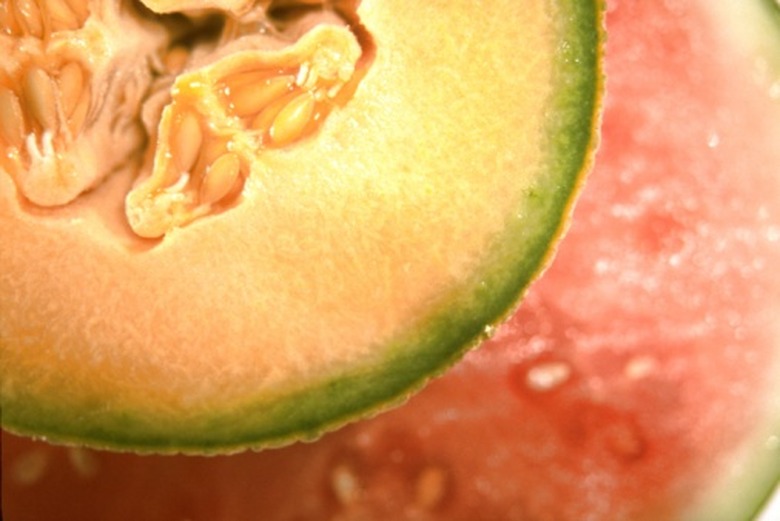Companion Plants For Cantaloupe
Cantaloupe, also known as muskmelon, thrives in the sunniest garden spot. They grow prolifically in well-enriched, sandy loam soil that is kept moist during the growing season. Companion plants for cantaloupe include corn, pumpkin, squash, collards, borage, oregano, radishes, marigolds, petunias and beans. Companion planting is based on the idea that certain plants are mutually beneficial when planted in near proximity. Large-scale agricultural use of companion planting is called intercropping.
How it Works
How it Works
Trap plants such as collards attract the aphids that infest young cantaloupe plants. Trap cropping is a type of companion planting that keeps harmful insects away from more vulnerable plants. Some plants, such as French marigolds , exude chemicals that repel harmful pests. The strong fragrance and aromatic oils of herbs such as basil, sage and garlic repel flies, mosquitoes, aphids and other insects. Some plants release chemicals that suppress weed seed germination. Tall plants such as corn work as nurse plants to shade smaller plants and suppress weed growth.
Cantaloupe Insect Pests
Cantaloupe Insect Pests
Cucumber beetles and aphids are sometimes a problem on young cantaloupe plants. Cucumber beetles have yellowish-green bodies with black spots or stripes. Squash bugs and squash vine borers attack both young and mature cantaloupe plants. Squash bugs damage plants by sucking juice from the leaves. They also inject a toxin into the plant that causes it to wilt, blacken and die back. Nasturtium, tansy, catnip, radish, marigolds, bee balm and mints are companion plants that prevent squash bug infestation.
Repel Beetles
Repel Beetles
When cucumber beetles attack cantaloupe plants, they transmit bacterial wilt to both young and mature plants. Bacterial wilt causes sudden wilting and death of the plant. Inspect and remove cucumber beetles from young cantaloupe plants twice a week. Good garden sanitation also helps reduce the spread of bacterial wilt and mildew. Clean up all spent plants, digging them under or putting them in the compost heap. Companion plants that repel the cucumber beetle include radish, rue, tansy, broccoli, calendula, catnip and goldenrod.
Repel Aphids
Repel Aphids
Aphids thrive in the same warm, moist environment that young cantaloupe plants need for healthy growth. They exude a honeydew substance that encourages the development of a black fungus known as sooty mold. They are attracted to the yellow flowers of growing cantaloupe plants. Yellow nasturtium flowers act as a companion trap plant for aphids, luring them away from nearby cantaloupes. Anise, chives, cilantro, garlic, onions, petunias and radish are companion plants for cantaloupe that reduce the aphid population by repelling them with a strong odor.
References
- National Sustainable Agricultural Information Service; Squash bugs & Squash Vine Borer: Organic Controls; Katherine L. Adam; 2006
- Golden Harvest Organics; Cucumber Beetles; November 2010
- Golden Harvest Organics; Aphids; 2010
- North Carolina State University extension; Muskmelons (Cantaloupe); Schulttheis, et al.; 1998
